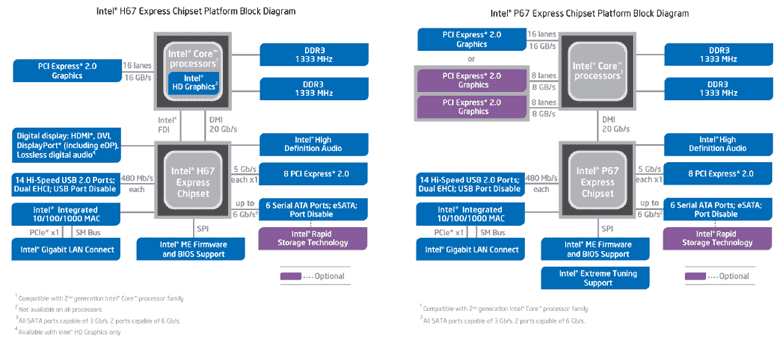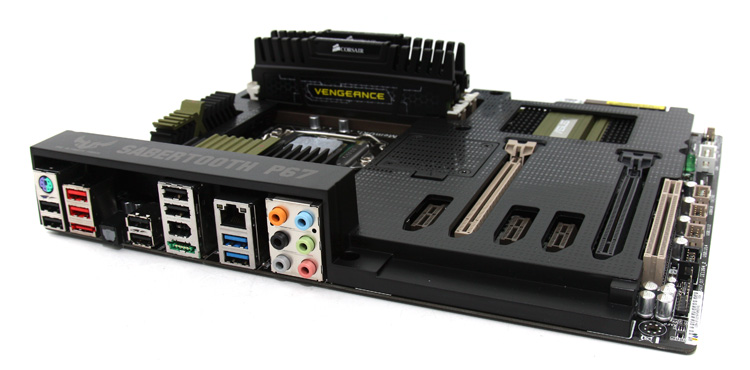The Intel 68 series chipset
The Intel 68 series chipset
Paired with the new Sandy Bridge based processors come new motherboard chipsets, ten in total of which five are intended for desktop processors, namely the P67, H67, Q65, Q67 and B65. Next to the new chipsets there is also a small socket change. Previous Clarkdale Core series processors were seated onto a LGA 1156 package (socket). The new SB processors do not share that same socket, Intel placed them onto socket LGA 1155, one pin less.
The primary reason here is that a last generation processor will not work with a series 6 chipset and vice versa. So you can't install by accident, a Clarkdale based Core i5 on a P67 motherboard.
Now, luckily this doesn't mean you'll be needing a new cooler, your old LGA 1156 CPU cooler is compatible with the LGA 1155 motherboard measurements. Let's have a look at the primary features of the 82P67 Platform Controller Hub chipset.
| Segment | Corporate | SMB - B65 | Consumer H67 | Consumer P67 |
| Socket | LGA 1155 | LGA 1155 | LGA 1155 | LGA 1155 |
| Memory channels / DIMM per channel | 2 / 2 | 2 / 2 | 2 / 2 | 2 / 2 |
| USB2.0 | 14 | 12 | 14 | 14 |
| SATA Total (Max number of 6Gb/s) | 6 (2) | 6 (1) | 6 (2) | 6 (2) |
| PCIe 2.0 | 8 | 8 | 8 | 8 |
| PCI | Yes | Yes | No | No |
| Integrated Display | 2 | 2 | 2 | n/a |
| Performance Tuning | No | No | No | Yes |
Above, you can see the primary desktop chipsets released, H67 and P67 will be the two chipset you are dealing with. For end consumers like you and me the H67 chipset will be less performance targeted and comes with support for monitor connectivity.
The one significant difference in-between H67 and P67 is that the P67 does not support the embedded GPU inside the processor or any of its functions. P67 requires a dedicated graphics card.
The P67 chipset is targeted at performance and enthusiast end users, allowing much more tweaking and providing performance features. As you can understand, we'll be testing a lot of these chipset based motherboards, some of which will also have support for the new uEFI BIOS. A graphics user interface BIOS that is going to fascinate you.

Interesting to know is that the new 67 series chipsets will come with SATA 6G controllers and though not native, all of them will very likely come with USB 3.0 support by using a NEC controller. P67 will have 16 PCIe lanes available for your graphics card (x16) but can be split down into two x8 PCIe lanes for graphics cards if you like to pursuit multi-GPU setup, hence SLI and Crossfire will run quite well on them.
The Intel 82P67 Platform Controller Hub (PCH) SATA2 ports can be configured in RAID 0, 1, 5, 10 with Intel's Rapid Storage Technology.
Another change is that the chipset now comes standard with an Intel Gigabit LAN (Intel 82579V) controller, on the previous chipsets this was an optional for ODMs, this time around... it simply sits there and can be used by the motherboard ODM. So I expect a big increase in Intel based LAN connectivity the upcoming year, bad news for Realtek that is.

